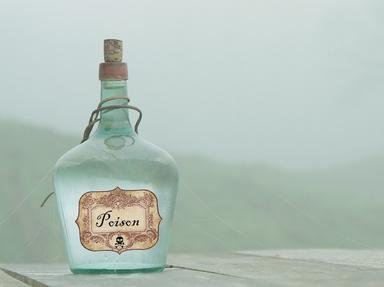Quiz Answer Key and Fun Facts
1. Considered one of the most toxic substances known to man, which of these is sold, commercially, as a dermatological injection?
2. Latrotoxin is the key debilitating component in the venom of what creature known for its distinct markings?
3. Awarded a Nobel Prize for his work, Paul Hermann Müller developed a pesticide known by what acronym, later discovered to be too detrimental to the environment for widespread use?
4. Technically a herbicide and a defoliant, which of these substances was sprayed over the forests of Vietnam during a nine year span covering the Vietnam War?
5. If a substance is capable of producing mutations, what is it considered?
6. Hydrocarbons usually cause depression of the central nervous system. Which of the following is *not* an example of a hydrocarbon?
7. There is a common air pollutant which does its damage by binding to hemoglobin in the blood stream, causing oxygen starvation. What pollutant is this?
8. Cyanotoxins are one of the most powerful types of natural toxins on the planet. Which of these creates them?
9. With a long history as an inhumane biochemical weapon, which of these is considered to be twenty-six times more dangerous than cyanide?
10. Perhaps most famous these days for being a classic Agatha Christie poison, which of these toxic substances was once used as a performance-enhancing medicant?
Source: Author
kyleisalive
This quiz was reviewed by FunTrivia editor
rossian before going online.
Any errors found in FunTrivia content are routinely corrected through our feedback system.
